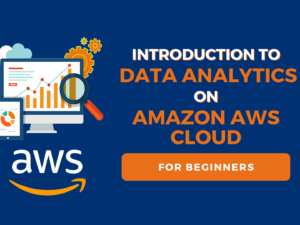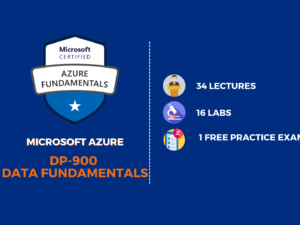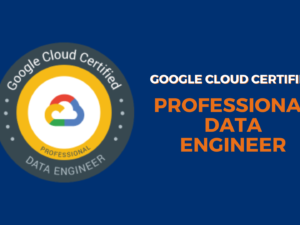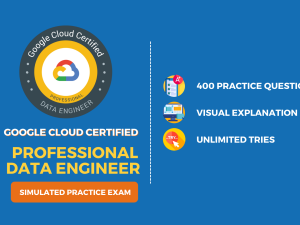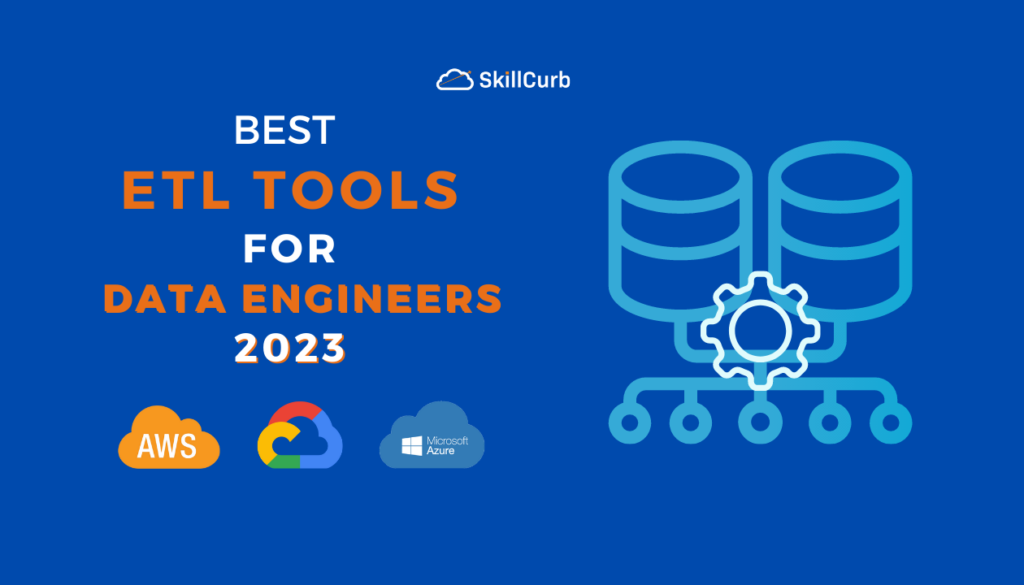
ETL Tools For Data Engineers 2023
One of the highest-paying cloud certifications is data engineering. The data generation’s exponential growth is carried out by data engineers using ETL tools. Therefore, as a data engineer, it is important to know everything about the best ETL tools.
Above all, data engineers are high in demand because of the daily data generation by companies and organizations. According to IDC, new data generation will grow at a 23% compound annual growth rate between 2020 and 2025, producing 175 ZB of data in total.
Data engineering tools make creating algorithms and building data pipelines easier and more effective. These tools are in charge of simplifying a data engineer’s regular tasks in a number of ways.
Using these tools also aids in the transformation of data, which is another reason to do so. As a result, big data can take any form: structured, unstructured, or combined.
Process Of ETL
The three distinct processes that makeup extract, transform, and load. Before that, you can click here to learn everything you need to know about ETL pipeline design for beginners.
Here’s a quick overview of the ETL process:
1. Extraction
Extraction is the process of obtaining raw data from one or more sources. Data may come from transactional applications, such as CRM data from Salesforce or ERP data from SAP, or from the Internet of Things (IoT) sensors that collect readings from, for instance, a production line or factory floor operation.
In order to establish a data warehouse, information is compiled into a single data set for extraction. After the data has been verified, any invalid data is either marked or erased. The formats of the extracted data can range from relational databases to XML, JSON, and other types.
2. Transformation
Moreover, to satisfy the demands of a company and the requirements of its data storage system, data is updated through transformation. Furthermore, data is carried out for cleansing to prevent adding inaccurate or mismatched data to the destination repository.
Examples of data cleansing include standardization (converting all data types to the same format), cleansing (fixing inconsistencies and errors), mapping (combining data elements from two or more data models), augmenting (incorporating data from other sources), and other processes.
Moreover, rules and procedures can be applied. Among the rules that could be used are loading just particular columns, deduplicating, and combining.
3. Loading Of Data
Last but not the least, the data is then loaded, provided, and secured for sharing. In this way, other users and departments within the firm can access data ready for business. This procedure might entail wiping out any data already present at the destination.
What Objectives Does ETL Serve?
By using ETL, businesses can combine data from multiple databases and other sources into a single repository.
In this way, data is appropriately analyzed i.e, formatted and qualified. With this unified data repository, analysis and additional processing can be simplified.
Additionally, it offers a single source of truth, ensuring that all enterprise data is accurate and current.
Construction of the Best Data Toolkit
It is completely normal for data engineers to feel overwhelmed with all the different data tools out here.
While these tools aid data engineers in creating a productive infrastructure for data and information, they also have advantages and disadvantages of their own.
Therefore, data engineers must select the best data tools for their organizations while managing the drawbacks of those tools. Moreover, this information also comes in handy during data engineering interview questions.
The ultimate objective is to construct a solid stack that handles data methodically and can function for months or years with little adjustment.
Best ETL Tools for Amazon AWS Data Engineers
In order to enable modern data analytics, data engineers create data pipelines, which are essentially infrastructure designs.
Data engineers require several sets of standards to build data pipelines. Thus, to address particular demands, we can use data engineering tools.
These tools may include various programming languages and data warehouses. Moreover, the tools are not restricted to data management, BI, processing, and analytics tools.
1. Python
It is common to use Python, a well-liked general-purpose programming language. In terms of data engineering, it is simple to learn and has established itself as the industry norm.
Python is frequently referred to as the “Swiss army knife” of programming languages because it has many applications. It helps, particularly when you want to create data pipelines.
Data engineers use the Python programming language to build ETL frameworks and automate API interactions.
It also helps to carry out data munging tasks, including reshaping, aggregating, and merging different data sources.
2. SQL
For all data engineers, querying is their main source of income. Meanwhile, SQL (Structured Query Language) is one of the key tools that data engineers use.
Data engineers use it to develop reusable data structures, carry out challenging queries, and produce business logic models.
3. PostgreSQL
Meanwhile, the world’s most widely used open-source relational database is PostgreSQL. The active open-source community of PostgreSQL, which is also not a company-led open-source tool like DBMS or MySQL, is one of the many factors contributing to the database’s popularity.
4. MongoDB
Popular NoSQL databases, including MongoDB. It can store and query both structured and unstructured data at a large scale and is very user-friendly and flexible.
Due to their capacity to manage unstructured data, NoSQL databases (like MongoDB) have become increasingly popular.
NoSQL databases are much more flexible and store data in straightforward, simple forms that are easier to understand than relational databases (SQL) with rigid schemas.
5. Apache Spark
Businesses today are aware of how crucial it is to collect data and make it available quickly within the company.
You can instantly query continuous data streams, such as sensor data, user activity on a website, data from the Internet of Things gadgets, financial trade data, and more, using stream processing.
One such well-liked stream processing implementation is Apache Spark.
6. Apache Kafka
Apache Kafka is an open-source event streaming platform with numerous applications, including data synchronization, messaging, real-time data streaming, and more. It is similar to Apache Spark. As a tool for data collection and ingestion, Apache Kafka is well-known for ELT pipeline construction.
7. Amazon Redshift
Data warehouses now serve purposes other than merely serving as data storage in modern data infrastructure. The fully-managed cloud-based data warehouse Amazon Redshift serves as a great example. Amazon Redshift is designed for enormous data storage and processing.
8. Snowflake
A well-known cloud-based data warehouse platform called Snowflake gives companies options for separate computing and storage, support for external tools, data cloning, and much more.
Snowflake streamlines data engineering processes by quickly ingesting, transforming, and delivering data for deeper insights.
9. Amazon Athena
You can analyze unstructured, semi-structured, and structured data kept in Amazon S3 (Amazon Simple Storage Service) using Amazon Athena, an interactive query tool. Athena supports ad-hoc SQL queries on both structured and unstructured data.
10. Apache Airflow
The emergence of numerous cloud tools in a modern data workflow makes it more challenging to manage data between various teams and realize the data’s full potential.
Tools for job orchestration and scheduling work to break down data silos, streamline processes, and automate tedious tasks so IT departments can operate quickly and effectively. Data engineers frequently use Apache Airflow to orchestrate and schedule their data pipelines.
Best ETL Tools for Microsoft Azure Data Engineers
As for cloud platforms, Microsoft Azure is the second biggest, with 200+ products and services.
Microsoft Azure made its debut in 2010 and has since developed. It is by far the biggest competitor to Amazon AWS and is rapidly growing.
With the help of a wide range of services specifically designed for Microsoft-centric businesses, Microsoft offers Azure, allowing many organizations to easily transition to a cloud-based or hybrid cloud environment.
Here’s a list of the best ETL tools for Microsoft Azure data engineers:
1. AzurePing
The first item on this list of useful productivity tools for Azure development is AzurePing. It is a free monitoring utility extension that runs as a local Windows service.
Keeping track of Azure Storage resources or Azure-hosted databases is made easier with AzurePing. AzurePing has basic built-in logging features in addition to the option of adding one’s own custom logging or notifications using Apache Log4Net extensions.
2. Cloud Explorer for Visual Studio
Among the Azure developer tools, Cloud Explorer for Visual Studio deserves special mention. The tool assists in the direct identification of Microsoft Azure resources from the Visual Studio IDE (Integrated Development Environment) based on name, type, or resource groups.
With the help of Cloud Explorer, it is simpler to locate resource properties as well as readily available developers, diagnostic techniques, and activities. For the management of resources and groups, Cloud Explorer also integrates well with the Azure Preview Portal.
3. Cloud Combine
Because of its numerous functionalities, Cloud Combine is another Azure development tool that receives a lot of attention. It facilitates more straightforward file browsing, downloading, uploading, and transferring between cloud storage services.
One of the noteworthy features of this service is its cross-platform compatibility with a variety of cloud storage services, including Google Cloud, Microsoft Azure, and Amazon Web Services. Additionally, it makes managing storage resources and logging into all cloud services easier.
Best ETL Tools for Google Cloud Platform (GCP) Data Engineers
Google Cloud Platform currently provides over 100 services across computing, networking, big data, and other areas, and has been open to the public since 2010.
In addition, Google Workspace, enterprise Android, and Chrome OS are just a few of the services that make up GCP today.
Nevertheless, here’s a list of the best ETL tools for Google Cloud data engineers:
1. The Google Cloud SDK
Let’s begin with the fundamentals. The Cloud SDK provides all the tools a GCP developer could possibly need, including a variety of command-line interface tools for Google Cloud Platform services and goods.
The Cloud SDK transforms your virtual machines, cloud SQL instances, and more by providing you with a wealth of tools and libraries for managing your applications and computing resources.
Bq, Gcloud, and gsutil command line tools are included in the Cloud SDK Essential Tools system and can be used to access Cloud Storage, Big Query, and Compute Engine.
2. Cloud Deployment Manager
Have you ever wished that creating and managing your cloud solutions were simpler? By enabling you to use YAML to specify the resources you need for your application, the Google Cloud Developer Deployment Manager enables you to do just that.
Another choice is to reuse particular deployment paradigms like auto-scaled instance groups and load-balanced groups by using Python templates.
3. Google Cloud Source Repositories
Git solutions are already familiar to the majority of Google Cloud Developers. Simply put, the Google Cloud Source Repository provides your team with a single location to meet up, collaborate on, and store code.
The environment provides developers with everything they need to securely and effectively manage code innovations on a highly scalable Git system, making it much more than just a primary Git repository.
By integrating it with your preferred Cloud Platform tools, such as Pub/Sub, Stackdriver, App Engine, Cloud Build, and others, you can easily expand your Git developer workflow. Additionally, you will have access to quick and indexed code searches across all of your owned repositories.
Standard services
The two largest service catalogs, with over 200 services offered, are those of AWS and Azure. Nearly 100 services are currently available through GCP. A general breakdown of services is:
- AWS has the most extensive service offering.
- With a strong portfolio of analytics, AI, and machine learning services, Azure comes in second place.
- Regarding the variety of services provided, Google Cloud Platform comes in third.
Pros and Cons of AWS, Azure, and GCP
Amazon Web Services (AWS)
Pros
- The vast majority of services include robotics and networking.
- Most mature.
- Regarded as the benchmark for security and dependability in the cloud.
- Versus Azure and GCP, more computing power.
- Programs from all major software vendors are accessible on AWS.
Cons
- You must pay for Dev/Enterprise support.
- The abundance of services and options available can be overwhelming to newcomers
- Options for hybrid clouds are relatively few.
MICROSOFT AZURE
Pros
- For current Microsoft services, simple integration, and migration
- There are numerous services, including top-notch AI, ML, and analytics services.
- Compared to AWS and GCP, generally speaking, less expensive.
- excellent backing for hybrid cloud strategies.
Cons
- Fewer service options than AWS.
- Specifically designed for business customers.
Google Cloud Platform (GCP)
Pros
- Has good compatibility with other Google services and products.
- Excellent support for workloads in containers
- Fiber network worldwide
Cons
- Compared to AWS & Azure, limited services
- Enterprise use cases only receive limited support.
Conclusion – Best ETL Tools in 2023
Data engineers can easily and effectively collect, analyze, process, and manage massive volumes of data thanks to database tools/frameworks like SQL, NoSQL, etc.
Moreover, as a data engineer, you can produce useful insights and build interactive dashboards using visualization tools like Tableau and Power BI.
Microsoft Azure, according to the IT community, has the lowest on-demand pricing, while Amazon typically falls somewhere in the middle.
As Azure is significantly less expensive than other cloud service providers, there is a clear advantage when enterprise customers who already use Microsoft services (Windows, Active Directory, MS SQL, etc.) switch to it.
Finally, we recommend that you put your skills to the test by taking one of these simulated practice exams by SkillCurb.
